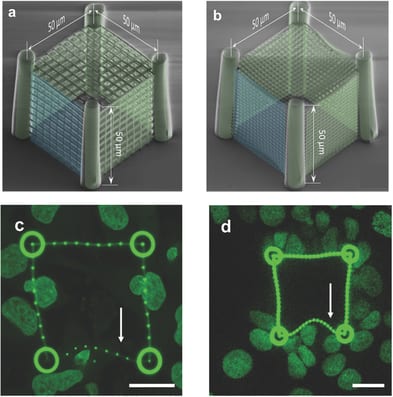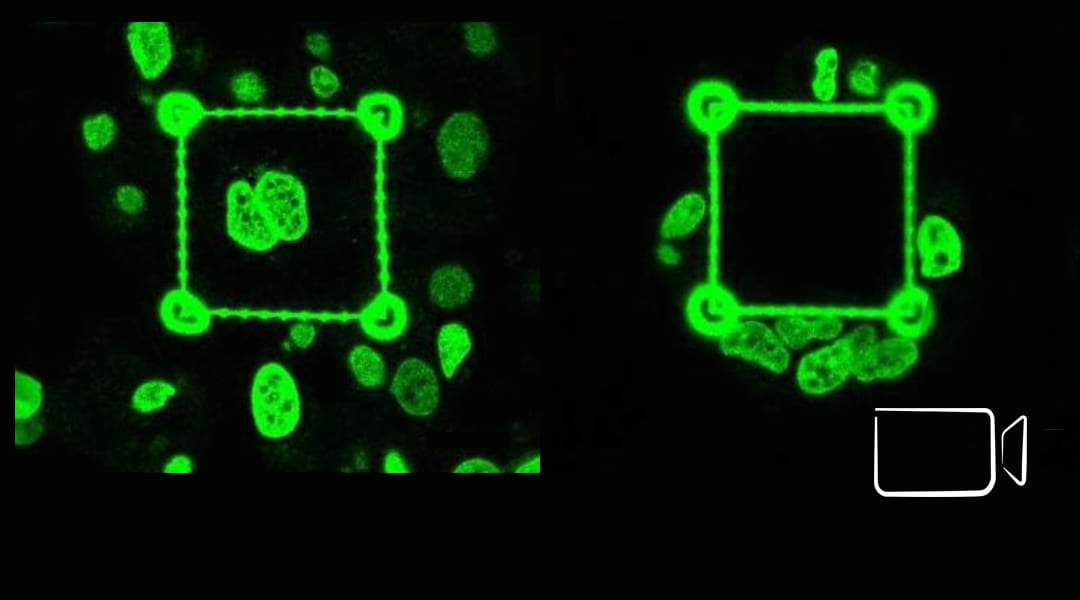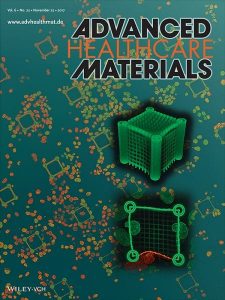
a,b) Representative colored scanning electron microscope images of L and S cages, respectively. c) L and d) S cages being invaded by MCF7 cells with the low stiffness facet (arrows) deformed by the cells pushing against the cage. More information here.
Mechanical interactions between cancer cells and the extracellular environment are critically important in driving and regulating tumor processes. Many new approaches have arisen to better understand cancer cell mechanics and their interactions with the extracellular matrix. However, there is still a considerable lack of knowledge on the effects of non-uniform environmental mechanical properties on the invasiveness of tumorigenic and metastatic cells, whose migration in vivo involves interaction with tissue of various stiffnesses.
Lemma and co-workers present an approach to study tumor cell invasiveness by exploiting an innovative class of polymeric scaffolds based on two-photon lithography to control the stiffness of deterministic microenvironments in 3D.
The researchers observe that invasive cells lose their ability to cross small pores when the structural stiffness increases and that the introduction of a soft weak spot within an overall rigid structure boosts the invasion rate of tumor cells derived from various tissues. The results were obtained for cell lines with various nominal mechanical properties, suggesting that the observed trend does not depend on nuclear stiffness.
The possibility to modulate structural compliance enabled the force distribution exerted by a single cell to be estimated, revealing that both pushing and pulling forces are involved in the cell–structure interaction. Overall, exploiting this method to obtain a wide range of 3D architectures with locally engineered stiffness can pave the way for unique applications to study tumor cell dynamics.
Watch the other videos from this research located in the Supporting Information here.


















